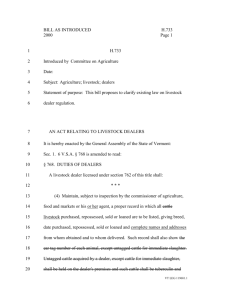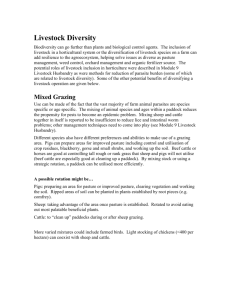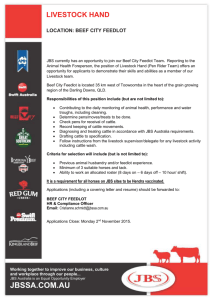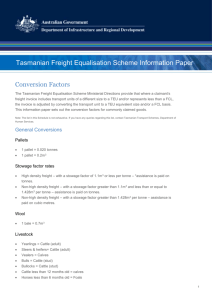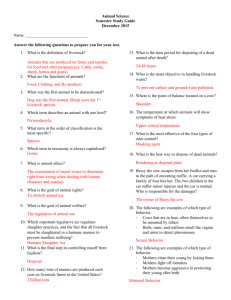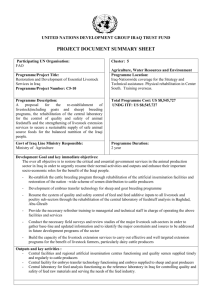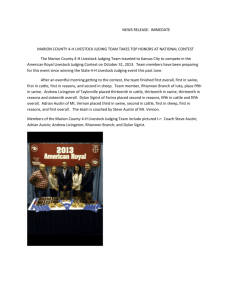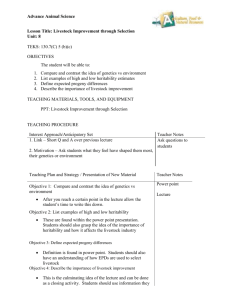Cattle Honduras factsheet_final2
advertisement
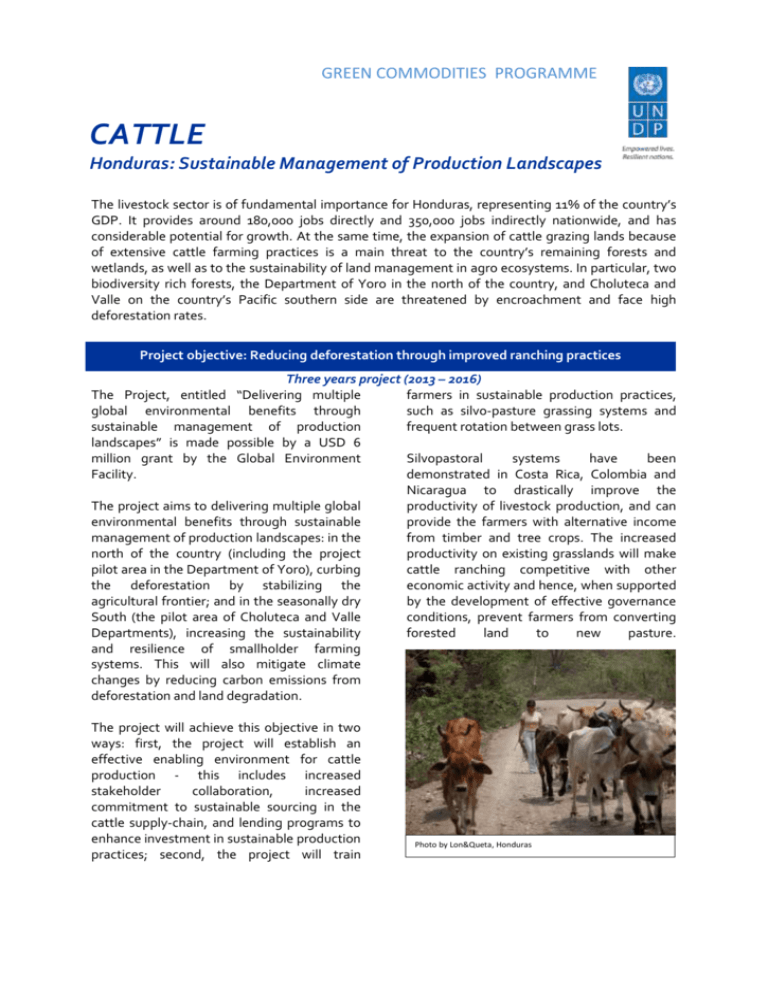
GREEN COMMODITIES PROGRAMME CATTLE Honduras: Sustainable Management of Production Landscapes The livestock sector is of fundamental importance for Honduras, representing 11% of the country’s GDP. It provides around 180,000 jobs directly and 350,000 jobs indirectly nationwide, and has considerable potential for growth. At the same time, the expansion of cattle grazing lands because of extensive cattle farming practices is a main threat to the country’s remaining forests and wetlands, as well as to the sustainability of land management in agro ecosystems. In particular, two biodiversity rich forests, the Department of Yoro in the north of the country, and Choluteca and Valle on the country’s Pacific southern side are threatened by encroachment and face high deforestation rates. Project objective: Reducing deforestation through improved ranching practices 5 year Programme (2013-2018) Three years project (2013 – 2016) The Project, entitled “Delivering multiple farmers in sustainable production practices, global environmental benefits through such as silvo-pasture grassing systems and sustainable management of production frequent rotation between grass lots. landscapes” is made possible by a USD 6 million grant by the Global Environment Silvopastoral systems have been Facility. demonstrated in Costa Rica, Colombia and Nicaragua to drastically improve the The project aims to delivering multiple global productivity of livestock production, and can environmental benefits through sustainable provide the farmers with alternative income management of production landscapes: in the from timber and tree crops. The increased north of the country (including the project productivity on existing grasslands will make pilot area in the Department of Yoro), curbing cattle ranching competitive with other the deforestation by stabilizing the economic activity and hence, when supported agricultural frontier; and in the seasonally dry by the development of effective governance South (the pilot area of Choluteca and Valle conditions, prevent farmers from converting Departments), increasing the sustainability forested land to new pasture. and resilience of smallholder farming systems. This will also mitigate climate changes by reducing carbon emissions from deforestation and land degradation. The project will achieve this objective in two ways: first, the project will establish an effective enabling environment for cattle production - this includes increased stakeholder collaboration, increased commitment to sustainable sourcing in the cattle supply-chain, and lending programs to enhance investment in sustainable production practices; second, the project will train Photo by Lon&Queta, Honduras National Livestock Platform The project identified an existing mechanism for dialogue for livestock and agreed with the Ministry of Agriculture and FAO to support its evolution into a National Livestock Platform Who are the main partners engaged in this initiative? Government Private Other partners Funding partner Ministry of Natural Resources and the Environment Ministry of Agriculture and Livestock Producer groups, processers, and buyers, including Walmart CATIE (Agriculture Centre for Tropical Investigation and Education) Global Environment Facility, Ministry of Agriculture and Livestock (IFAD loans to PROMECOM, EMPRENDESUR and Horizontes del Norte rural development projects), Central American Bank for Economic Integration (CABEI), ICADE, CATIE For more information, please contact (Juan Ferrando, Program Specialist) (Tel: +504 2220-1100; email: juan.ferrando@undp.org)


